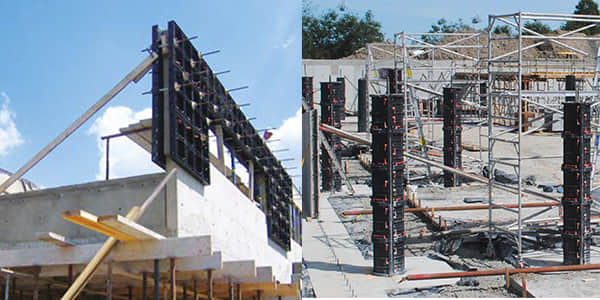What Is Plastic Formwork In Construction
Oct 24, 2024Plastic Formwork pertains to the type of building formwork constructed of synthetic plastics, which are used as temporary supporting systems when pouring concrete to ensure that the concrete sets properly during the hardening process. Compared with wooden formwork and steel formwork, this is the form of constructing formwork made from synthetic material, including polyethylene (PE), polypropylene (PP), and ABS resin, which is light, durable, and protects against environmental degradation.
It can be reused in construction projects and thereby reduce the waste generation, material wastage, and cater to the necessity of sustainable development. The plastic formwork also possesses good water and rust-resistance properties, suitable for wet or chemical environments, and its smooth surface allows less defect in concrete which leads to a reduced amount of finishing later.
In a nutshell, plastic formwork has been light, durable, and sustainable in modern construction. This has been made suitable for applications in residential, commercial, bridge, and underground construction, hence presenting the stakeholders with a more efficient option and thus saving on the long-term construction costs.
Plastic formwork has many types based on diverse materials used and type of applications; hence the proper formwork is selected for various projects of a construction nature. Taking into account such classifications will help in making decisions that conform to their specific usage. Major classifications of plastic formwork will be as follows:
The plastic formwork may be divided into the following types in light of the materials applied:
· · PP (Polypropylene) Plastic Formwork: Lightweight and strong, PP plastic formwork has excellent resistance to chemical and water action, making it highly suitable for various construction work to minimize material wastages.
· · ABS Plastic Formwork: Known for its high strength, impact resistance, and heat resistance, ABS plastic formwork is suitable for projects requiring load-bearing capacity to occur and stability in critical conditions.
· · Composite Plastic Formwork: Lightweight composite plastic formwork, reinforced with some plastic or fiberglass, offers additional strength and durability for complex construction conditions.
Hollow plastic formwork: The hollow aspect of the formwork reduces dead weight while keeping enough strength. Hollow formwork is lightweight, easy to install and disassemble, and applicable for several construction projects.
· · Square hole hollow formwork: Square hole design gives better stability/support and is good for construction projects needing a slightly higher strength.
· · Round hole hollow formwork: The round hole design is lightweight and is thus appropriate in weight-sensitive projects as well as those with greater flexibility in the structural requirements.

Plastic formwork can also be subdivided by purpose according to the needs of the construction project, thus, making it suitable for different kinds of structures to be built and shape desired. These include:
· · Flat Formwork: Flat formwork is flexible and supplied in most standard sizes, as it is exit from standard requirements for customized applications to meet specific project requirements, construction of flat structures like walls and floors being the chief function.
· · Corner Formwork: Designed for walls and column corners, corner formwork offers stable support for concrete, making for distinct edges and corners and thereby less edge finishing after casting.
· · Cylindrical Formwork: For the formation of circular or cylindrical structures, cylindrical formwork is utilized in flexible cylindrical buildings, bridges, and tunnels for purposes of uniformity and for aesthetic appeal.
· · Beam Formwork: Beam formwork is used for making beams, particularly for the joints between flooring and columns. Thus it carries a lot of load and demands very high strength and precision.

Owing to the qualities that plastic formwork offers, it has found extensive applications in fields such as construction and engineering. Some of the applications of plastic formwork are:
Among various products for plastic formworks, it is crucial in the process of construction works to choose the right formwork for the smooth flow of the project. A few factors and processes that could help in determining which is the best plastic formwork are as follows:
Since plastic formwork constitutes one of the most important materials in modern construction, such constructions have gradually started to surface as an obvious choice given their light nature, prolonged durability, and commendable eco-friendliness. A detailed understanding of plastic formwork covers definition, classification, advantages, and disadvantages, application, installation and maintenance, and market trends, so that customers perceive a more thorough understanding of the material to make informed purchasing decisions. Against this, growing international pressure towards green buildings and sustainable development renders a huge potential for the plastic formwork market.
How many times can plastic formwork be reused?
Is plastic formwork suitable for all types of projects?